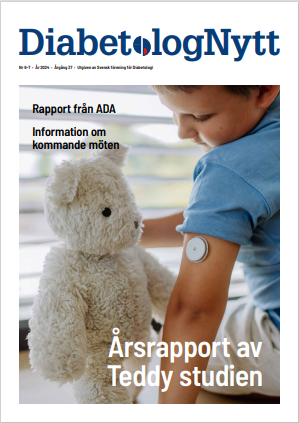A small study found that the pancreas weighed significantly less in organ donors with type 1 diabetes than in those without the disease.
Note that the study was limited by a low incidence of subsequent type 1 diabetes in patients who were single-islet autoantibody positive.
The smaller pancreas that is often found in patients with type 1 diabetes was also seen in people at risk for the disease, pointing to a possible diabetes biomarker, researchers reported.
In a study of organ donors, pancreata from those with diabetes weighed significantly less than those of patients who had antibodies indicative of disease, but did not have full-blown type 1 diabetes (P=0.02), reported John Kaddis, PhD, from the City of Hope in Duarte, Calif., and colleagues in the Dec. 12 issue of the Journal of the American Medical Association.
The pancreas also weighed significantly less those of healthy controls (P<0.001), they wrote in a research letter.
”Replication of these findings is critical, as we need to understand whether factors exist that potentially lead to weight differences in pancreata of at-risk individuals,” Kaddis said in an email to MedPage Today.
Findings from autopsies and imaging studies have suggested that the pancreas of adults with type 1 diabetes may be smaller and weigh less than organs from those without the disease, but it’s not clear exactly when pancreatic atrophy begins.
So Kaddis and colleagues set out to look at the pancreas early in the natural history of type 1 diabetes by assessing organs from the Network for Pancreatic Organ Donors with Diabetes between 2006 and 2012.
They screened for autoantibodies before organ recovery and then did confirmatory testing. They also confirmed the presence of type 1 diabetes with lab markers and a medical chart review.
In total, they assessed 23 controls without type 1 diabetes, 20 cases of type 1 diabetes, and eight donors who didn’t have diabetes, but were positive for single-islet autoantibodies.
Overall, Kaddis and colleagues found that there were differences in the mean weight of the pancreas based on disease status.
While the mean weight for a pancreas from controls was 81.4 grams, it was only 44.9 grams for patients with type 1 diabetes (P<0.001).
Those who were single-islet autoantibody positive also appeared to experience pancreatic atrophy, with a mean pancreatic weight of 61.3 grams (P=0.02).
Kaddis told MedPage Today that if the results can be validated, screening patients for early stages of pancreatic atrophy could be one implication of the work.
”Another may be that preventive strategies aimed at preserving the mass of the pancreas might help to combat disease development,” he added, noting that this would require a better understanding of the potential mechanisms by which diabetes is linked to pancreatic atrophy.
The study was limited by its small sample size and by a low incidence of subsequent type 1 diabetes in patients who were single-islet autoantibody positive.
They also noted that a functional assessment of each pancreas was not possible.
Nonetheless, they concluded that ”the weight of pancreata in individuals without type 1 diabetes, but with serum markers that potentially precede the clinical manifestations, as well as in individuals with type 1 diabetes, was less than in controls. This suggests that early atrophy of the organ may be an important subclinical feature of type 1 diabetes pathogenesis.”
The study was supported by the Network for Pancreatic Organ Donors with Diabetes.
The researchers reported no conflicts of interest.
Kaddis J, et al ”Pancreas organ weight in individuals with disease-associated autoantibodies at risk for type 1 diabetes” JAMA 2012; 308: 2337-2339.
Nyhetsinfo
Se abstract
Research Letters | December 12, 2012
Pancreas Organ Weight in Individuals With Disease-Associated Autoantibodies at Risk for Type 1 Diabetes
Martha Campbell-Thompson, DVM, PhD; Clive Wasserfall, MS; Emily L. Montgomery, BS; Mark A. Atkinson, PhD; John S. Kaddis, PhD
JAMA. 2012;308(22):2337-2339. doi:10.1001/jama.2012.15008.
To the Editor: Autopsy and imaging studies suggest that human pancreata from adults with type 1 diabetes (T1D) are smaller and weigh less than those without the disease.1- 2 However, it is unknown when pancreatic atrophy begins in T1D.
Therefore, we examined pancreas weight early in the natural history of T1D from at-risk individuals without diabetes but with disease-associated autoantibodies, obtained through the Network for Pancreatic Organ Donors with Diabetes program.3 All donors were identified by organ procurement organizations that coordinate organ and tissue donations for clinical transplantation or research.
http://jama.jamanetwork.com/article.aspx?articleid=1484507
www red DiabetologNytt





